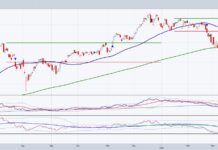Consumers have an abundance of options when it comes to entertainment. The internet has magnified this.
Today, nearly anyone can enjoy a high-quality streaming experience for a few dollars each month. On top of the adoption of connected TV devices, streaming time also continued to increase.
In February 2022, the weekly time spent streaming video content increased by 18 percent compared to February 2021.
Investment Implications
Over the past several years, many companies have zeroed in on their direct-to-consumer content offerings. Companies like Disney have leveraged their proprietary content to launch their Disney+ streaming service. Others include Peacock, Paramount+, and HBOMax.
Unfortunately, the abundance appears to be taking a toll on consumers with nearly half saying it’s harder to find content they want because of the variety of options. Yet despite this, the share of consumers holding more than 3 subscriptions at a time has increased from 32% in 2019 to 58% in 2022.
Aside from the legacy content companies, companies like Amazon and Roku have also been competing heavily to be the operating system of connected TVs. With only a small share of linear TV ad budgets having made the shift to connected TVs, the opportunity is large.
Today’s streaming landscape remains fragmented and competitive. It will be interesting to see what remains when the dust settles. Following consumer trends can provide us insights into how the landscape will look down the road, and what companies may lead the way.
Twitter: @_SeanDavid
- The author or his firm may have positions in mentioned securities at the time of publication. Any opinions expressed herein are solely those of the author, and do not in any way represent the views or opinions of any other person or entity.








